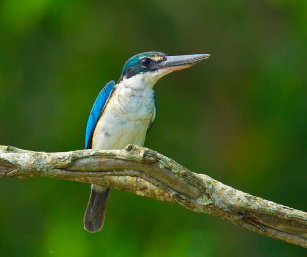Bhitarkanika, Sept 2014
In September, we made a three day trip to the mangroves of Bhitarkanika in NE Odisha. Saltwater crocodiles, Monitor Lizards and Kingfishers are the top draw in addition, of course, to the fabulous mangroves itself and the million mysterious creeks.
The Bhitarkanika mangrove conservation area comprises of Bhitarkanika National Park and Wildlife Sanctuary and Gahirmatha Marine Sanctuary approximating around 3000 sq km area of which around 4.8% (145 sq km) area has mangrove cover.

This deltaic, estuarine-mangrove wetland system, harbours the highest diversity of Indian mangrove flora, the largest known rookery of the olive ridley sea-turtles in the world, the last of the three remaining population of salt-water crocodiles in India, the largest known population of king cobra, one of the largest heronry along the east coast of India and one of the highest concentration of migratory waterfowls – both ducks and waders. The loss of mangrove of Bhitarkanika is mainly due to human encroachment and reclamation of land for agriculture and unsustainable resources use practices such as aquaculture activities. [Courtesy: Wildlife Institute of India].
We stayed at the functional yet resourceful Bhitarkanika Jungle Resort.






























